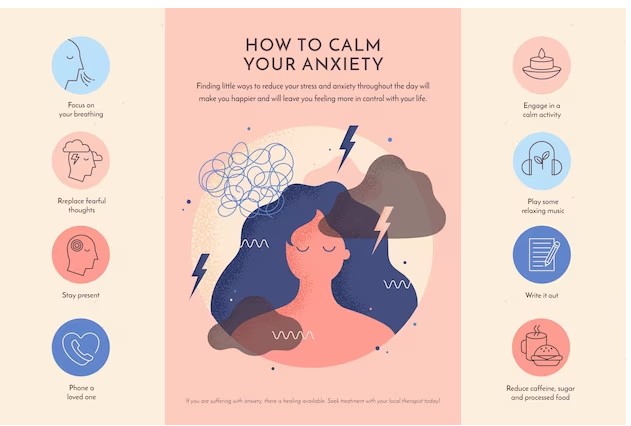Creating a Mindful Digital Workspace: Tips To Reduce Stress
In today’s digital age, where screens and technology dominate our daily lives, it’s no surprise that digital stress has become a common phenomenon. From endless notifications to information overload, the constant demands of our digital devices can be overwhelming and exhausting. That’s why creating a mindful digital workspace has never been more important.
In this article, we will explore effective strategies for reducing digital stress and cultivating a more serene and productive digital environment. Whether you’re a student, a remote worker, or a business professional, these techniques will help you regain control of your digital life and find balance in a fast-paced world.
Understanding digital stress and its impact on productivity
In order to effectively combat digital stress, it’s important to first understand its impact on our productivity. Digital stress refers to the negative psychological and emotional effects caused by excessive screen time and constant connectivity. It can lead to feelings of overwhelm, anxiety, and burnout, making it difficult to concentrate and perform at our best.
Research has shown that excessive screen time can lead to decreased attention span, reduced cognitive function, and increased mental fatigue. Constant exposure to social media, emails, and notifications can create a sense of urgency and information overload, making it challenging to stay focused on important tasks. By recognizing the impact of digital stress on our productivity, we can begin to take steps towards creating a more mindful digital workspace.
The benefits of creating a mindful digital workspace
Creating a mindful digital workspace has numerous benefits for our overall well-being and productivity. By implementing strategies to reduce digital stress, we can enhance our focus, improve our mental clarity, and increase our productivity. A mindful digital workspace allows us to regain control over our digital lives, enabling us to use technology as a tool rather than being controlled by it.
When we create a serene and organized digital environment, we can minimize distractions and create space for deep work and creative thinking. By setting boundaries with technology and practicing mindfulness, we can improve our ability to prioritize tasks, manage our time effectively, and achieve a healthy work-life balance.
Assessing your current digital habits and identifying areas of improvement
The first step in creating a mindful digital workspace is to assess your current digital habits and identify areas of improvement. Take some time to reflect on how you currently interact with technology and the impact it has on your well-being and productivity. Are you constantly checking your phone for notifications? Do you find yourself mindlessly scrolling through social media for hours on end? Are you easily distracted by emails and messages?
Once you have identified areas of improvement, you can start implementing changes to reduce digital stress. This could involve setting specific time limits for social media use, turning off unnecessary notifications, or creating designated technology-free zones throughout your day. By being aware of your current habits and making conscious choices to improve them, you can begin to create a more mindful digital workspace.
Decluttering your digital space: organizing files, emails, and apps
A cluttered digital space can contribute to feelings of overwhelm and make it difficult to find what you need when you need it. Taking the time to declutter and organize your digital files, emails, and apps can have a significant impact on your productivity and mental well-being.
Start by organizing your files into logical folders and deleting any unnecessary or outdated documents. Create a system for managing your emails, such as using labels or folders to categorize them and setting up filters to automatically sort incoming messages. Additionally, consider decluttering your smartphone by deleting unused apps and organizing your remaining apps into folders based on their purpose.
By decluttering your digital space, you can create a more streamlined and efficient workflow, minimizing distractions and reducing digital stress.
Setting boundaries and creating a healthy work-life balance
One of the key strategies for reducing digital stress is setting boundaries with technology and creating a healthy work-life balance. It’s important to establish clear guidelines for when and how you will use your digital devices, both during work hours and in your personal time.
Set specific time limits for checking emails and engaging with social media, and stick to them. Create technology-free zones or designated “digital detox” periods throughout your day or week, where you disconnect from screens and engage in offline activities. Establishing boundaries will allow you to recharge and prioritize self-care, leading to increased focus and productivity when you do engage with technology.
Incorporating mindfulness practices into your digital routine
Mindfulness practices can be powerful tools for reducing digital stress and fostering a more mindful digital workspace. Mindfulness involves intentionally paying attention to the present moment, without judgment. By bringing mindful awareness to our digital interactions, we can cultivate a more intentional and balanced relationship with technology.
Try incorporating short mindfulness practices into your digital routine, such as taking a few deep breaths before checking your phone or setting an intention for how you want to engage with technology throughout your day. Practice being fully present when using your digital devices, noticing any thoughts or emotions that arise without getting caught up in them. By cultivating mindfulness in your digital interactions, you can reduce stress and increase your overall well-being.
Utilizing productivity tools and apps to enhance focus and reduce distractions
In addition to mindfulness practices, there are a variety of productivity tools and apps that can help enhance focus and reduce distractions in your digital workspace. These tools can help you stay organized, manage your time effectively, and create a more productive digital environment.
Consider using productivity apps that block access to distracting websites or limit your time on certain apps. Utilize project management tools to keep track of tasks and deadlines, and use time-tracking apps to gain insight into how you’re spending your time online. Experiment with different tools and apps to find what works best for you and your specific needs.
Implementing digital detoxes and technology-free zones
Taking regular breaks from technology is essential for reducing digital stress and maintaining a healthy work-life balance. Implementing digital detoxes and technology-free zones allows you to disconnect from screens and engage in offline activities that nourish your mind and body.
Schedule regular periods of time where you intentionally disconnect from your digital devices. Use this time to engage in activities that bring you joy and relaxation, such as reading a book, going for a walk in nature, or spending quality time with loved ones. By taking breaks from technology, you can recharge and rejuvenate, leading to increased focus and productivity when you return to your digital workspace.
Creating a supportive community and accountability system
Creating a mindful digital workspace is much easier when you have support and accountability. Consider finding a supportive community or accountability partner who shares similar goals and values. This could be a coworker, friend, or online group where you can share your progress, challenges, and insights.
By connecting with others who are also striving to reduce digital stress and create a more mindful digital workspace, you can gain valuable insights and encouragement. You can share tips and strategies, hold each other accountable, and celebrate your progress together. Having a supportive community can greatly enhance your journey towards a more balanced and mindful digital life.
Conclusion: Embracing a mindful digital workspace for increased well-being and productivity
In today’s fast-paced digital world, creating a mindful digital workspace is essential for reducing digital stress and enhancing productivity. By implementing strategies such as decluttering your digital space, setting boundaries with technology, incorporating mindfulness practices, and taking regular breaks from screens, you can create a more serene and balanced digital environment.
Remember, creating a mindful digital workspace is a journey, and it requires ongoing awareness and effort. Be gentle with yourself and celebrate small victories along the way. By embracing a mindful digital workspace, you can reclaim control over your digital life, reduce stress, and foster a more balanced and productive relationship with technology. Start implementing these strategies today and experience the transformative power of a mindful digital workspace.





